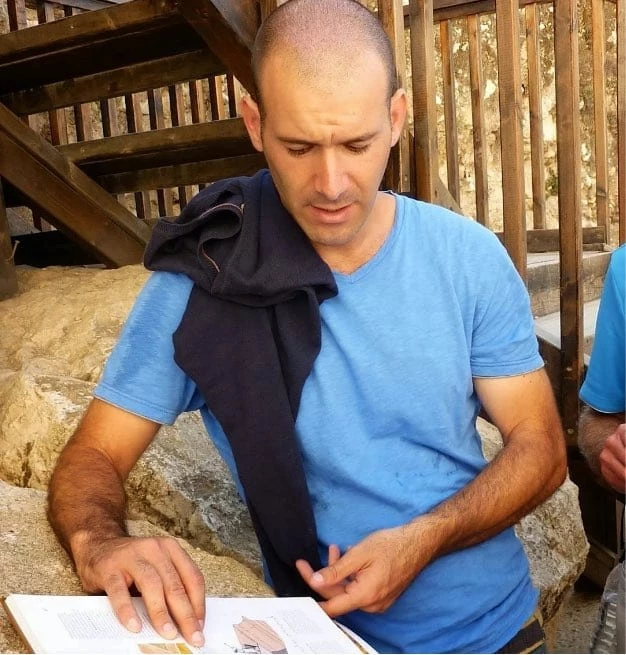Ashkelon National Park is home to many historic sites and some spectacular natural scenery. The park is surrounded by an ancient wall built by the Fatimid Caliphate in the mid-12th century. In addition it holds one of the oldest arches in the world to date.
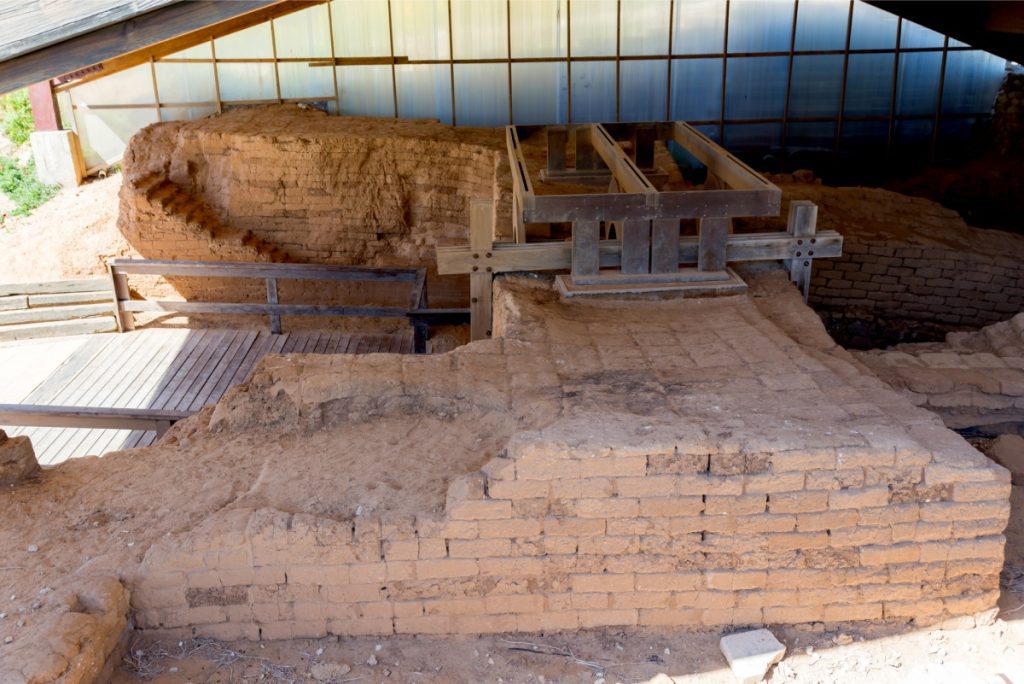
Ashkelon National Park – Archeological Remains
So historians will delight in the fascinating array of antiquities and archeological remains in Ashkelon National Park. For example, various civilizations lived in the area; ranging from Canaanites and Persians to Phoenicians; Byzantines, Philistines; and Greeks.
Also, there are some amazing Roman ruins to explore; such as beautiful basilicas; granite and marble capitals and columns, and statues. Furthermore, one of the most significant ruins in the park is a Middle Bronze Age gate dating back to approximately 1850 BCE, which is believed to be the world’s earliest arch.
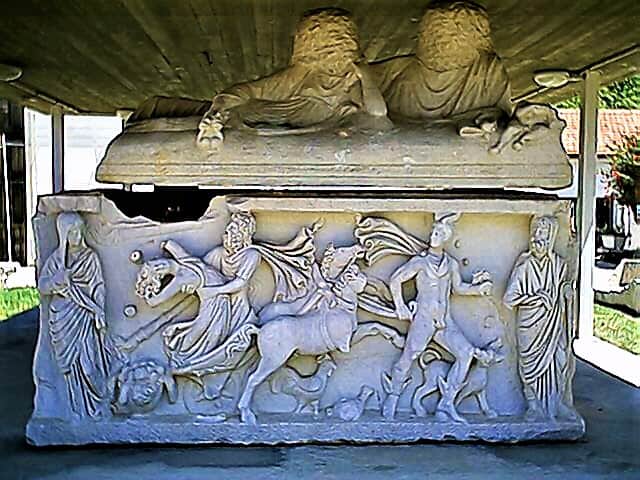
Top Attractions
The Ashkelon National Park is home to a wealth of attractions and things to see, from archeological remains to amazing natural dunes and kurkar landscapes, and a beautiful beach ideal for swimming and sunbathing in summer.
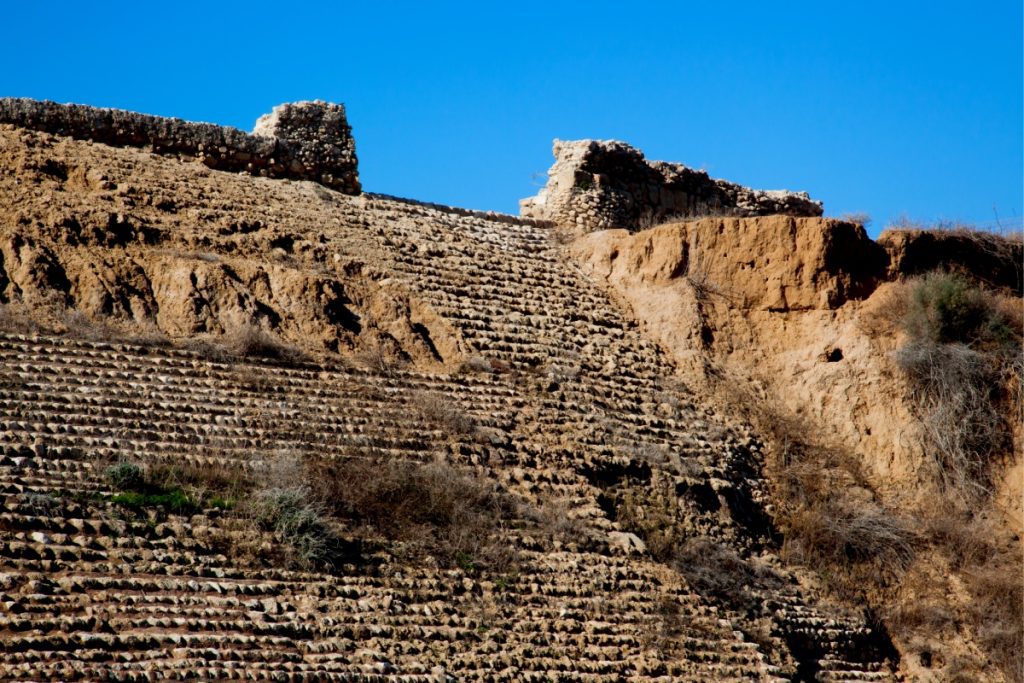
So Ashkelon National Park is surrounded by the remains of medieval walls built by the Fatimid Muslims to fortify the city against the Crusaders in the 12th century. Moreover, the enclosed city had four gates – the Gaza, Jaffa, Jerusalem, and Sea Gates, which were named for the directions in which they left the city. Today, the remains of the wall can be seen to the east of the Canaanite gate, which features marble columns and other interesting architectural elements.
The Canaanite Gate and Rampart
Dating back to 1850 BCE, the Canaanite gate is believed to be the oldest vaulted gate in the world. It is made from mud and kurkar bricks; the gate was used for 250 years before being buried under an earth rampart.
Likewise, a small temple was found outside the gate holding a bronze figurine of a calf that was thought to be related to the ritual of El or Baal, the father of the Canaanite gods. Furthermore, the Canaanite rampart is an enormous earthen rampart built in the Middle Bronze Age and marked the borders of Ashkelon.
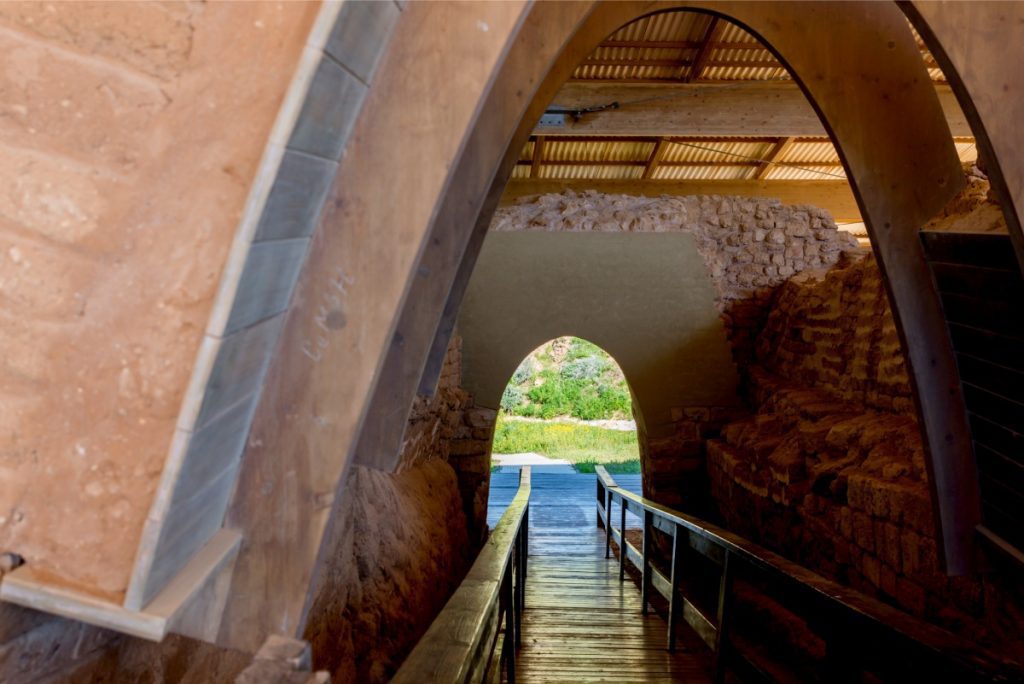
The Roman Basilica
Another amazing thing to see in Ashkelon National Park is the remains of a magnificent Roman basilica that stand in the center of the park. No doubt about it, this is a must-visit on a guided tour of the park. Moreover, since it dates back to the Roman period, the site features the remains of a columned structure with rows of marble and granite columns, which was once the city’s basilica and the focus of public life in the Roman town. Another site that is well worth seeing is the ancient theater, which is now used to host cultural events throughout the year.
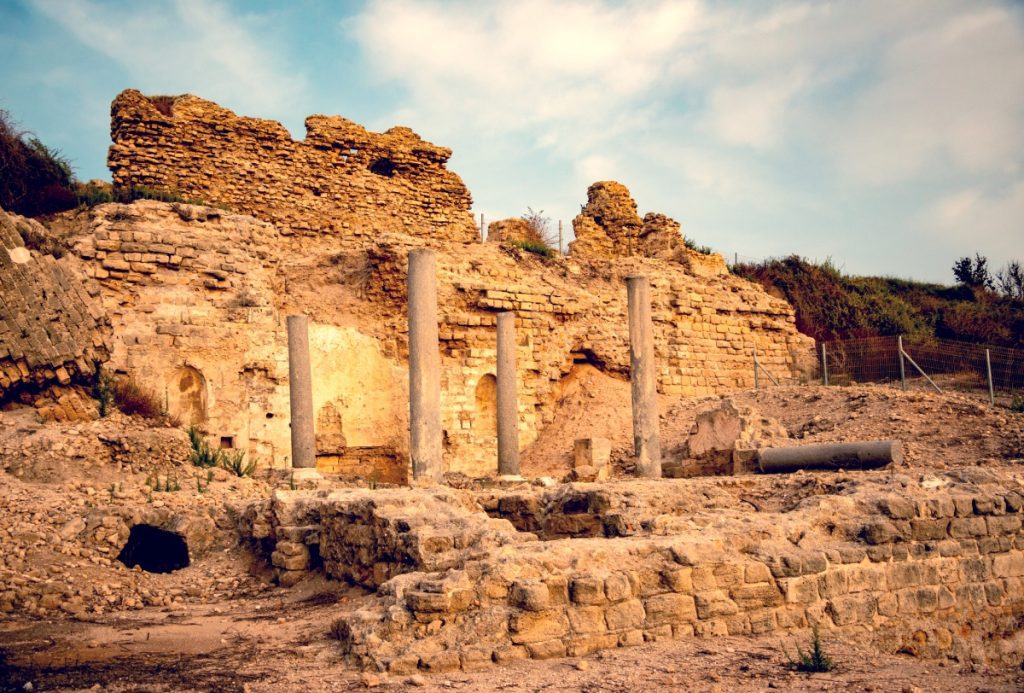
Natural Features in the Park
Currently, the park has several beautiful natural features. Including a lovely seasonal bathing beach with showers; toilets; lifeguard facilities; and a nature reserve that protects flora and fauna in the southern part of the park. So if you have some spare time, and after you have toured all the major sites in the Holy Land, come and visit this beautiful park.
Park Opening Hours:
Summer hours:
Sunday–Thursday and Saturday: 8 am – 8 pm
Friday and holiday eves: 8 am – 8 pm
Winter hours:
Sunday–Thursday and Saturday: 8 am – 4 pm
Friday and holiday eves: 8 am – 4 pm
Holiday eves: 8 am – 1 pm
Yom Kippur Eve: 8 am – 1 pm
Summer: Exit by 10 pm
Winter: Exit by 6 pm
The beach is open:
April–May 8 am -7 pm
June–July–Aug. 8 am-7 pm
September 8 am – 6 pm
October until Oct. 18: 8 am-5 pm

